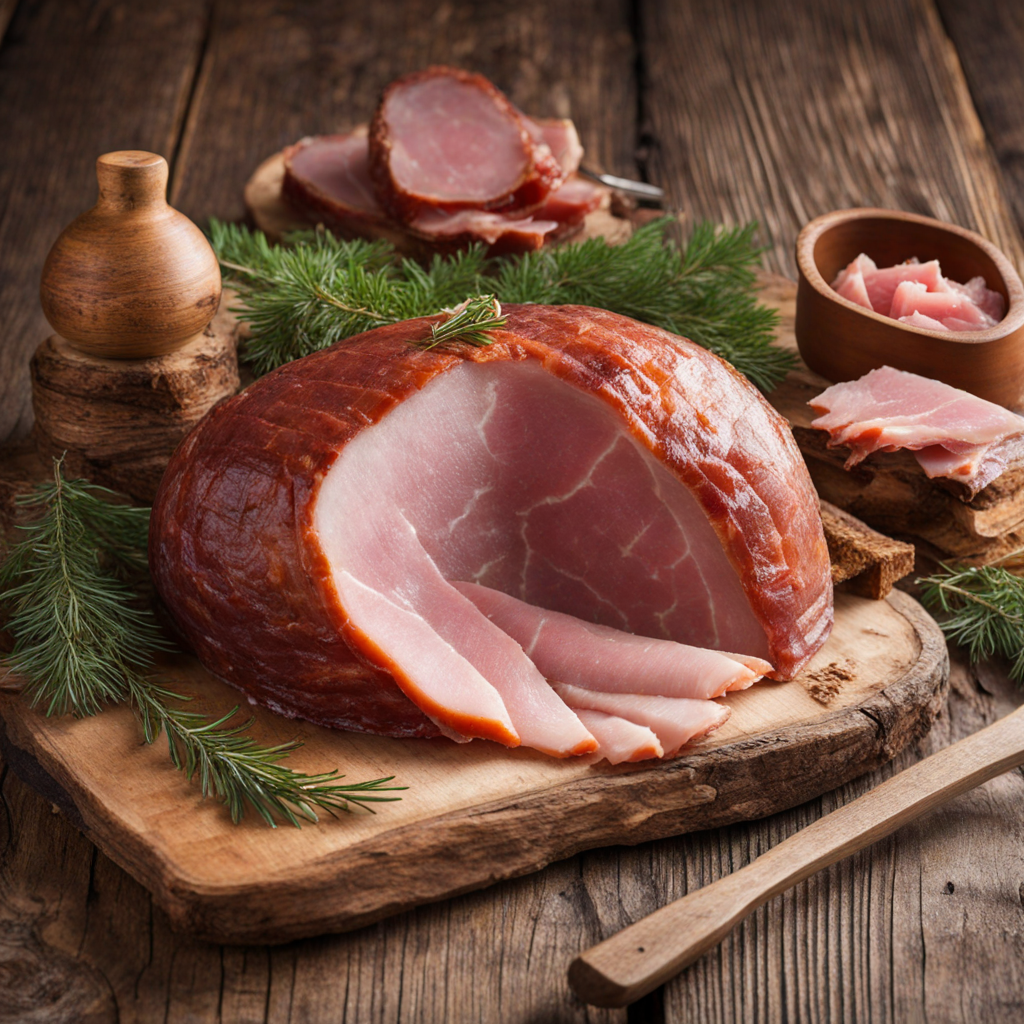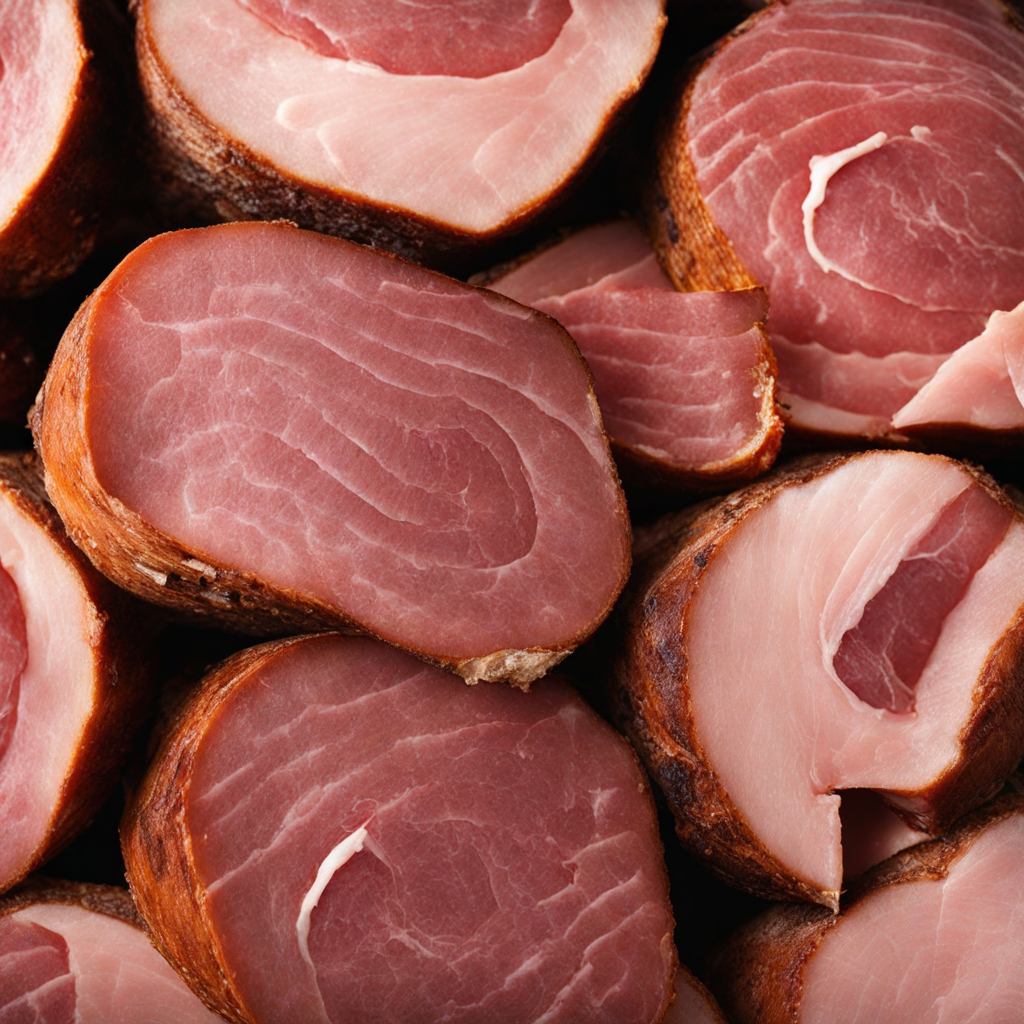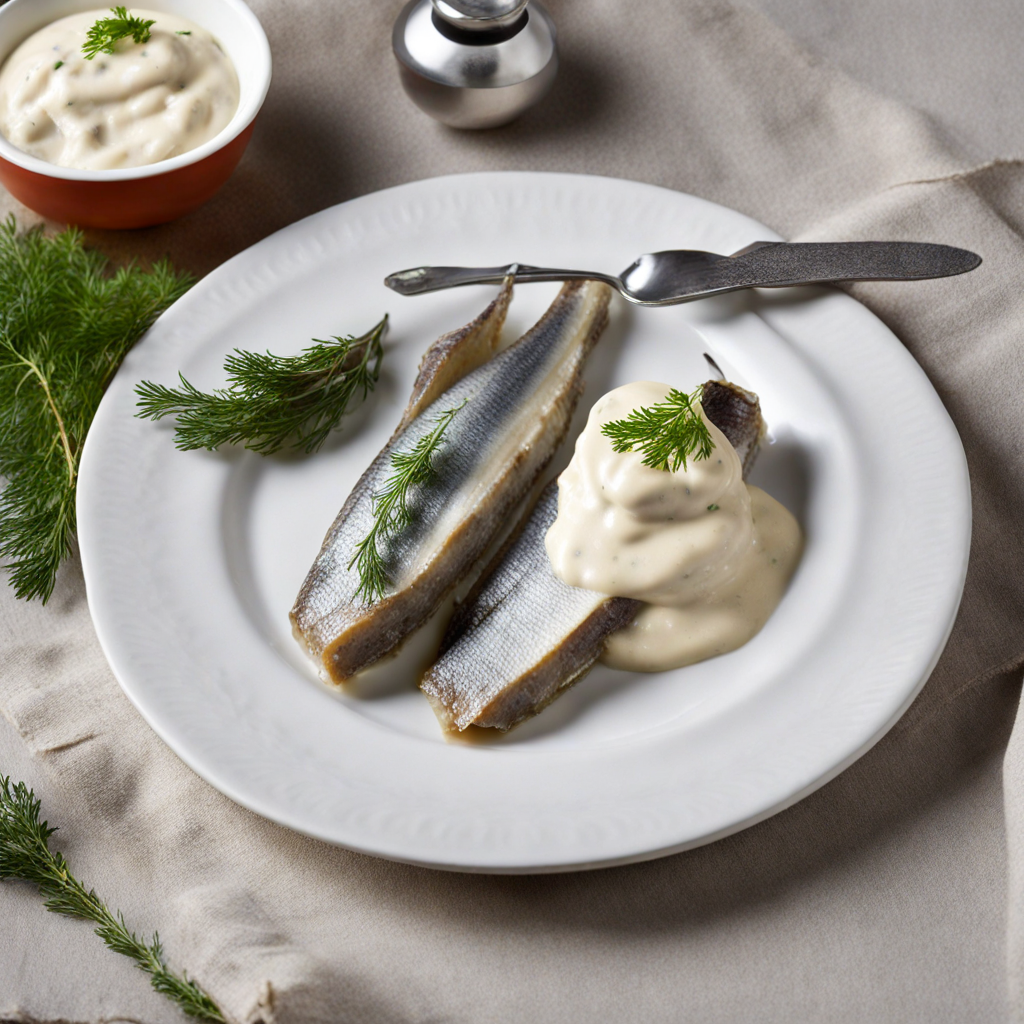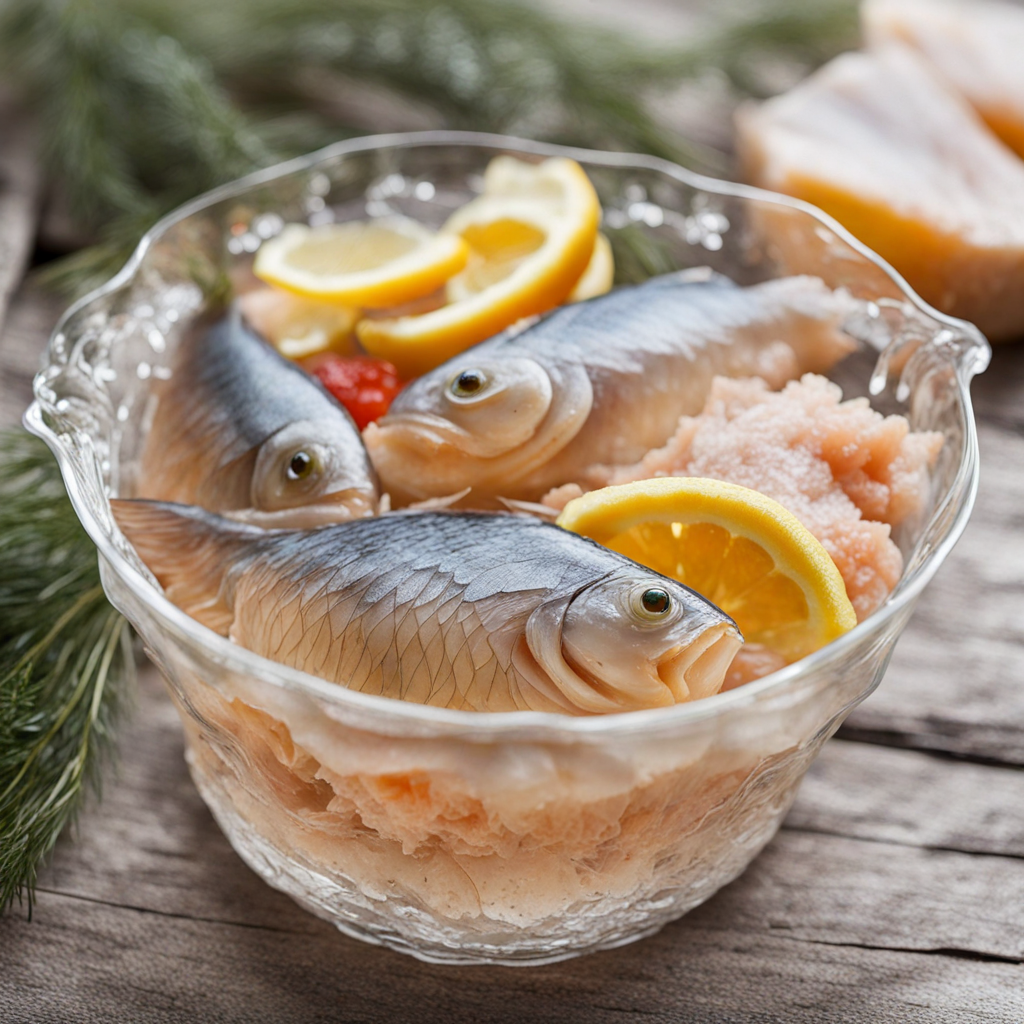Smoked Sauna Ham
Smoked Sauna Ham, or "Suitsetatud Saunaseene," is a unique Estonian delicacy that embodies the rich culinary traditions of the region. This exquisite ham is known for its deep smoky flavor, which is achieved through a traditional smoking process that takes place in specially designed sauna-like smokehouses. The ham is typically made from high-quality pork, which is carefully cured and seasoned before being exposed to fragrant hardwood smoke, infusing it with a distinct aroma that is both earthy and inviting. The result is a beautifully marbled piece of meat that boasts a tender texture and a rich, savory taste that is unlike any other ham. What sets Smoked Sauna Ham apart from other smoked meats is its preparation method, which reflects Estonia's deep connection to nature and the age-old practice of preserving food. The smoking process not only enhances the flavor but also helps to extend the shelf life of the ham, making it a staple in Estonian households. Often enjoyed during festive occasions or family gatherings, this ham is typically served thinly sliced, allowing the flavors to shine through. It pairs wonderfully with traditional accompaniments like dark rye bread, pickles, and mustard, creating a harmonious balance of flavors on the palate. Exploring Smoked Sauna Ham is a journey into the heart of Estonian culture, where food is not just sustenance but a celebration of heritage. Each bite captures the essence of the land, the smoke, and the time-honored traditions that have been passed down through generations. For those seeking to discover new tastes, this ham offers a delightful experience, inviting you to savor its unique flavor profile while embracing the warmth and hospitality that Estonia is known for.
How It Became This Dish
Suitsusaunasingi: A Culinary Journey through Estonia’s History Estonia, a small Baltic nation with a rich tapestry of cultural influences, offers a diverse culinary landscape that reflects its history, geography, and the resilience of its people. Among its many traditional dishes, Suitsusaunasingi stands out, not just for its unique flavor profile, but for the cultural narrative it embodies. This dish, which translates to "smoked sauna fish," is deeply rooted in Estonia's agricultural practices, social customs, and the historical significance of the sauna in Estonian culture. Origins of Suitsusaunasingi The word "suitsusaunasingi" is derived from "suitsu" meaning "smoke," "sauna," which refers to the traditional Finnish-style sauna integral to Estonian life, and "sangi" meaning "fish." The origins of this dish can be traced back to the coastal areas of Estonia, where fishing was not only a livelihood but also a communal activity that fostered strong ties among families and neighbors. Fishing in Estonia dates back thousands of years, with archaeological evidence suggesting that early inhabitants relied on the bountiful waters of the Baltic Sea and its lakes for sustenance. The technique of smoking fish is ancient and was developed as a means of preservation before the advent of refrigeration. Smoking not only extended the shelf life of fish but also imparted a distinctive flavor that became cherished in local cuisine. Smoked fish has been a staple in various cultures around the world, but in Estonia, the practice took on a unique character, particularly with the inclusion of the sauna. Saunas have been a fundamental aspect of Estonian life, serving as places for relaxation, socialization, and even spiritual cleansing. The combination of smoking fish and the sauna is emblematic of the Estonian way of life, where culinary practices are intertwined with social customs. Cultural Significance Suitsusaunasingi is more than just a dish; it is a symbol of Estonian identity and tradition. For many Estonians, the act of preparing and consuming smoked fish is steeped in family heritage. Traditionally, families would gather during fishing seasons to catch fish, which would then be prepared and smoked in the sauna, ensuring a communal experience. This practice not only reinforced familial bonds but also fostered connections within the wider community. The sauna itself is a revered space in Estonia, often referred to as a "sacred place." It has historically been a site for various rituals, from childbirth to healing. The process of smoking fish in the sauna is an extension of this cultural reverence. The smoke from the sauna imbues the fish with flavors that are both aromatic and deeply satisfying, creating a culinary experience that resonates with the soul of Estonia. In contemporary times, Suitsusaunasingi has found its place in both traditional and modern Estonian cuisine. It often appears in festive celebrations, such as Midsummer (Jaanipäev) or Christmas, where it is served alongside traditional rye bread and pickles. The dish also symbolizes Estonia's rich biodiversity, showcasing local fish varieties, particularly herring, sprats, and salmon. Development Over Time As Estonia navigated the tides of history—through periods of foreign occupation and independence—so too did its culinary landscape evolve. The 20th century saw significant changes in food production and consumption patterns, influenced by globalization and industrialization. However, despite these challenges, traditional dishes like Suitsusaunasingi remained resilient. In the post-Soviet era, Estonia experienced a culinary renaissance, during which there was a renewed interest in traditional foods and local ingredients. Chefs began to explore the rich heritage of Estonian cuisine, and Suitsusaunasingi re-emerged as a celebrated dish, often featured in upscale restaurants and culinary festivals. This revival not only highlighted the importance of preserving local culinary traditions but also showcased the adaptability of Estonian cuisine in a modern context. With the rise of the farm-to-table movement, many contemporary Estonian chefs emphasize the use of sustainably sourced ingredients, often returning to traditional methods of preparation. Smoked fish, including Suitsusaunasingi, has become a canvas for culinary innovation, with chefs experimenting with different smoking techniques, marinades, and accompaniments. This evolution reflects a broader trend in global cuisine, where traditional dishes are reimagined while still paying homage to their roots. The Modern Palate In today's Estonia, Suitsusaunasingi can be found in various forms, from traditional recipes handed down through generations to modern interpretations served in trendy eateries. The dish often graces the menus of restaurants aiming to celebrate Estonian heritage, drawing both locals and tourists alike. Pairing Suitsusaunasingi with local craft beers or traditional Estonian spirits like Vana Tallinn enhances the tasting experience, allowing diners to appreciate the rich interplay of flavors. The cultural significance of Suitsusaunasingi is also amplified by Estonia's growing interest in food tourism. Visitors to the country are increasingly drawn to authentic culinary experiences that offer insights into Estonian culture. Cooking classes, food festivals, and guided tours featuring local culinary traditions have become popular, providing an opportunity to learn about the historical and cultural context of dishes like Suitsusaunasingi. Conclusion Suitsusaunasingi is a remarkable testament to Estonia's culinary heritage, embodying the interplay of history, culture, and community. From its origins as a practical method of preservation to its status as a beloved dish in modern Estonian cuisine, Suitsusaunasingi has withstood the test of time, adapting to the changing tides of society while remaining deeply rooted in tradition. As Estonia continues to forge its identity in a globalized world, dishes like Suitsusaunasingi remind us of the importance of preserving culinary heritage and the stories behind the food we eat. This dish, rich in flavor and history, serves not just as sustenance but as a celebration of Estonian culture, a symbol of resilience, and a testament to the enduring bond between people and their food.
You may like
Discover local flavors from Estonia







